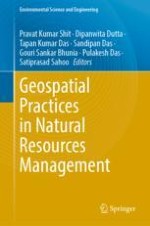2024 | OriginalPaper | Buchkapitel
14. GIS Based Delineation of Flood Susceptibility Mapping Using Analytic Hierarchy Process in East Vidarbha Region, India
verfasst von : Kanak Moharir, Manpreet Singh, Chaitanya B. Pande, Abhay M. Varade
Erschienen in: Geospatial Practices in Natural Resources Management
Aktivieren Sie unsere intelligente Suche, um passende Fachinhalte oder Patente zu finden.
Wählen Sie Textabschnitte aus um mit Künstlicher Intelligenz passenden Patente zu finden. powered by
Markieren Sie Textabschnitte, um KI-gestützt weitere passende Inhalte zu finden. powered by
